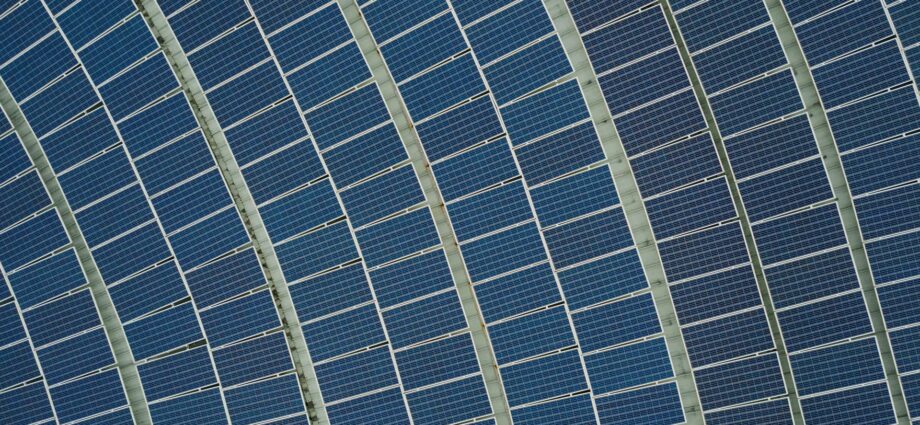
Solar panels. Photo by CHUTTERSNAP on Unsplash.
New S&P Global report unveils a dynamic landscape for clean energy in 2024, showcasing the industry’s resilience, innovation, and global commitment to a sustainable future
January 24, 2024
S&P Global Commodity Insights, a “leading independent provider of information, analysis, data and benchmark prices for the commodities, energy and energy transition markets,” published on January 23 a new report on the top trends for clean energy technology in 2024.
“Our forecast anticipates a 15% increase in clean energy technology (CET) investments in 2024 to nearly $800 billion, led by solar,” said S&P Global Commodity Insights’s Head of Gas, Power & Climate Solutions, Philippe Frangules.
This article looks at some of the key trends shaping the future of clean energy, from offshore wind milestones to a technology race between East and West, identified in the report.
1. Investments in clean energy tech to increase
According to S&P Global Commodity Insights’ projections, investments in clean energy technology are set to increase by a substantial 10–20% in 2024 (compared to 2023), hitting almost $800 billion.
Solar energy, accounting for about 55% of investments, would dominate the investment landscape, followed by wind energy, which the report notes would “grow more slowly.”
Battery energy storage and electrolysis are expected to be the “fastest growing areas for new investments.”
2. Average clean energy tech capex to decline
The new S&P Global Commodity Insights report projects the average cost of clean energy technologies to continue to drop in 2024.
This should happen — despite a rise in offshore wind and hydrogen costs — thanks to the rapidly declining costs of solar and batteries as a result of oversupply and declining prices of raw materials.
As the report reminds us, solar and battery costs “came down significantly in 2023 and will drop well below 2020 levels in 2024.”
3. Rising importance of decarbonization
The renewables industry, as the report explains, is changing its approach after coming under fire in the past for selling parts to produce low-carbon power but failing to focus in the same way on reducing the carbon footprint of the most energy-intensive segments of the value chain.
Hoping to improve the transparency and traceability of renewable supply chains and materials, producers of renewable energy are increasingly planning to decarbonize their operations before 2030. They’re also developing strategies to reduce emissions at the core of their products.
The report explains how the decarbonization is meant to happen:
- “the use of low-carbon electricity resources like more renewables and hydroelectric-powered plants, and less coal or natural gas, and
- a progressive reduction in materials consumption, such as of (e.g. polysilicon or silver), the exploration of less-intensive new manufacturing technologies, and use of lower carbon footprint materials.”
4. Price war between solar and storage manufacturers
Manufacturers of batteries and solar panels saw strong profits for two years, but through 2024, their margins are expected to decline according to the S&P report.
Downstream stakeholders in the solar industry, such as distributors and installers, will be more exposed to financial risk due to dropping pricing, excessive inventories, and potential write-offs.
The second half of 2023 saw a downstream pricing war brought on by oversupply and declines in the price of raw materials for solar modules and batteries, which the S&P expects will culminate in market consolidation in 2024.
Leading large manufacturers will “likely need to differentiate themselves through innovative products or exceptional price over quality decisions;” smaller manufacturers, meanwhile, are “likely to face negative gross margins.”
5. An “unprecedented milestone” for offshore wind
When it comes to offshore wind, 2024 is “poised to witness an unprecedented milestone,” the report authors write.
Over 60 Gigawatts of additional capacity — “enough to cover Poland’s total power demand” — will be up for sale in at least 17 separate markets, setting a record for offshore wind energy.
This surge in auctioned capacity, which is expected despite the recent rise in costs of offshore wind due to supply chain bottlenecks and interest-rate-driven increases in financing costs, “serves as a resounding testament to the unwavering dedication of both established and emerging markets towards advancing and embracing this pivotal technology.”
6. Wind turbines: Competition from the East
The global wind turbine supply market is experiencing a shift as Chinese turbine makers challenge Western counterparts.
Historically, the S&P report notes, the wind turbine supply market has been split into two groups: “approximately fifteen Chinese manufacturers supplying China domestically, and four regionally diversified Western firms largely catering to the rest of the world.”
However, the burdensome contracts, rising overhead, unstable supply chains, and excessive input costs have damaged the balance sheets of the Western manufacturers.
Chinese manufacturers of wind turbines, the report says, are “increasingly competing against the Westerns in international markets” — they are lowering costs, advancing technology, and making fresh investments in the supply chain.
For example, the price gap between the two groups has grown to almost 70% according to the report. In terms of rated capacity, China’s recently declared turbine production exceeds that of its Western counterparts by a minimum of 30%.
The report anticipates the continuation of the pricing pressure and technological arms race, which will present “Western turbine makers with the continued dual challenge of regaining profitability while safeguarding market share.”
Subscribe to our newsletter.
This article was originally published on IMPAKTER. Read the original article.

